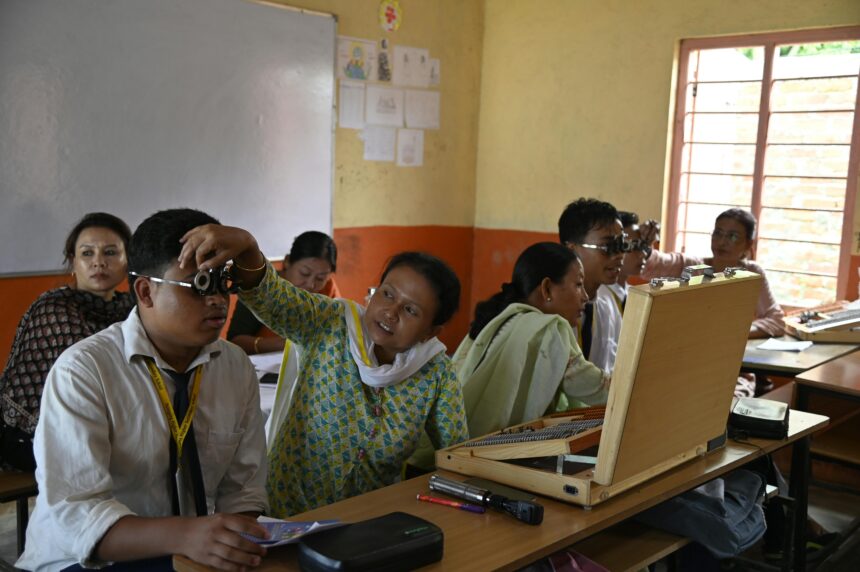New Delhi, [2025]: The National Education Policy (NEP) 2020 is fundamentally reshaping the definition of a “good school” in India. Historically, schools were judged by their infrastructure—spacious campuses, well-maintained playgrounds, advanced laboratories, and modern classrooms. The NEP, however, pivots toward learning outcomes, skill development, and holistic education, highlighting that the quality of education depends not on physical resources but on measurable student growth.
A Shift in Priorities: Learning Outcomes Over Infrastructure
The NEP 2020 identifies foundational literacy, numeracy, and critical thinking as cornerstones of quality education. Schools are now evaluated not by the grandeur of their facilities but by their ability to nurture essential skills such as problem-solving, digital literacy, and creativity.
Education Minister Dharmendra Pradhan addressed this change, stating, “A good school is not defined by its size but by the skills and knowledge it imparts to every child. The NEP places the learner at the center of the education system, not the infrastructure.”
This shift brings Indian education in line with global standards, emphasizing the need for adaptable, future-ready students who can succeed in an evolving, technology-driven world.
Holistic Development: Integrating Academics and Life Skills
The NEP reframes school education as a platform for holistic development. It encourages the integration of academics with sports, arts, and experiential learning to ensure well-rounded growth. Schools are urged to implement “sports-integrated learning” and activity-based teaching methods to promote physical fitness, teamwork, and creativity alongside academic rigor.
For many institutions, this represents a significant cultural shift—from a narrow focus on test scores to fostering emotional, social, and intellectual development. Students are encouraged to engage in problem-solving projects, critical discussions, and creative exercises, preparing them to thrive in diverse real-world situations.
Addressing Rural-Urban Disparities
Infrastructure disparities remain a pressing concern, particularly in rural India, where schools often lack basic facilities. The NEP tackles this issue by prioritizing learning outcomes and introducing innovative, low-cost solutions. Digital tools, flexible curricula, and community-driven initiatives enable meaningful education regardless of infrastructure limitations.
Education consultant Dr. Anjali Gupta explained, “The NEP’s focus on skills and outcomes creates equity in education. A small rural school with limited resources can now match or even surpass its urban counterparts in delivering impactful learning.”
Urban schools, grappling with space constraints, are finding creative solutions such as rooftop playgrounds, multi-purpose activity zones, and virtual labs. These innovations help balance academic needs with extracurricular opportunities, creating an environment conducive to overall student growth.
Teachers: The Driving Force for Learning Outcomes
While infrastructure remains supplementary, teachers play a central role in delivering quality education. The NEP prioritizes teacher training and pedagogical reforms to empower educators with modern tools and techniques. Effective teaching strategies and a focus on student engagement ensure that learning outcomes remain at the forefront, irrespective of a school’s physical limitations.
Investing in teacher development is critical to achieving the NEP’s goals. Educators are encouraged to move away from rote learning methods, instead fostering inquiry, critical analysis, and independent thought among students.
The Future of “Good Schools”
The National Education Policy 2020 introduces a progressive and inclusive framework for redefining school quality in India. By shifting focus from physical infrastructure to learning outcomes and skill-building, it challenges schools to prioritize student development above all else.
As India works toward implementing this vision, both urban and rural schools are urged to innovate and adapt. A “good school” is no longer defined by its facilities but by its ability to equip students with the knowledge, skills, and confidence to succeed in a rapidly changing world.
Conclusion
In the NEP era, a “good school” empowers students to learn, innovate, and excel—regardless of its size or resources. By emphasizing outcomes, holistic education, and teacher-driven reform, the NEP lays the foundation for a brighter, more equitable future for India’s youth.


Leave a Reply